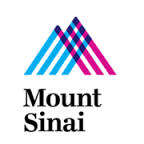Assessment of Pharmacokinetics and Safety of Diazepam Buccal Soluble Film in Pediatric Patients
| Status: | Recruiting |
|---|---|
| Conditions: | Neurology, Epilepsy |
| Therapuetic Areas: | Neurology, Other |
| Healthy: | No |
| Age Range: | 2 - 17 |
| Updated: | 1/13/2019 |
| Start Date: | August 31, 2017 |
| End Date: | November 24, 2019 |
| Contact: | Frances Ekweonu |
| Email: | fekweonu@aquestive.com |
| Phone: | 908-307-3549 |
A Multicenter,Open Label Crossover Study to Assess the Pharmacokinetics and Safety of Diazepam Buccal Soluble Film (DBSF) in Pediatric Subjects With Epilepsy
The hypothesis of the study is that DBSF will be safe and tolerable in pediatric patients
during the Interictal state (Period A) and the ictal/peri-ictal state (Period B) of Epilepsy,
and pharmacokinetics will be the same during and in-between experiencing seizures.
during the Interictal state (Period A) and the ictal/peri-ictal state (Period B) of Epilepsy,
and pharmacokinetics will be the same during and in-between experiencing seizures.
This is a Multicenter , Open Label Crossover study to assess the Pharmacokinetics and Safety
of Diazepam Buccal Soluble Film (DBSF) in Pediatric patients with Epilepsy.
The Primary objective of the study is to assess the pharmacokinetics of DBSF in pediatric
patients with epilepsy in interictal State (Period A) and ictal/peri-ictal state (Period B).
Subjects are considered to be in interictal state if an interval of at least 3 hours has
elapsed since any clinical observable postictal signs or symptoms (from the last observed
seizure) and the subject has been seizure free over this period.
For the purposes of this study, the ictal state is defined as an ongoing clinically
observable seizure or seizure activity as verified via EEG. The peri-ictal state is defined
clinically as the subjects's immediate postictal state following a generalized tonic-clinic
(GTC) seizure or focal seizure with impaired awareness , and within 5 minutes following the
last clonic jerk.
The secondary objectives include a) Evaluate the safety/tolerability of DBSF in pediatric
subjects with epilepsy. b) Evaluate the usability of DBSF.
The minimum study duration will be approximately 35 day, with a maximum of approximately 58
days , consisting of 1) screening period 2)Treatment Period A 3)Treatment Period B and 4)
Follow up visit.
Blood samples will be drawn during the entire study for assessing the pharmacokinetics of the
DBSF.
of Diazepam Buccal Soluble Film (DBSF) in Pediatric patients with Epilepsy.
The Primary objective of the study is to assess the pharmacokinetics of DBSF in pediatric
patients with epilepsy in interictal State (Period A) and ictal/peri-ictal state (Period B).
Subjects are considered to be in interictal state if an interval of at least 3 hours has
elapsed since any clinical observable postictal signs or symptoms (from the last observed
seizure) and the subject has been seizure free over this period.
For the purposes of this study, the ictal state is defined as an ongoing clinically
observable seizure or seizure activity as verified via EEG. The peri-ictal state is defined
clinically as the subjects's immediate postictal state following a generalized tonic-clinic
(GTC) seizure or focal seizure with impaired awareness , and within 5 minutes following the
last clonic jerk.
The secondary objectives include a) Evaluate the safety/tolerability of DBSF in pediatric
subjects with epilepsy. b) Evaluate the usability of DBSF.
The minimum study duration will be approximately 35 day, with a maximum of approximately 58
days , consisting of 1) screening period 2)Treatment Period A 3)Treatment Period B and 4)
Follow up visit.
Blood samples will be drawn during the entire study for assessing the pharmacokinetics of the
DBSF.
Inclusion Criteria:
Potential subjects meeting all of the following criteria may be included in the study:
1. Subjects have a clinical diagnosis of epilepsy (GTC seizures or focal se izures with
impaired awareness) and are scheduled for admission to an Epilepsy Monitoring Unit
(EMU), General Clinical Research Center (GCRC), or similar facility for evaluation.
2. Male and female subjects between 2 and 17 years of age, inclusive.
3. Subjects have a body weight of:0-6 kg and sl 11 kg.
4. Subjects have an average frequency of:C:l clinically apparent seizures every 3 days or
≥10 clinically apparent seizures per month, with alteration ofconsciousness as
documented by seizure diaries dispensed at the Screening Visit and verified prior to
Treatment Period A or Treatment Period B.
5. Female subjects of childbearing potential (i.e., are having periods, are not
surgically sterile) must have a negative serum pregnancy test (ll-hCG) at Screening
and a negative urine pregnancy test on Day I prior to drug dosing. Female subjects of
childbearing potential must agree to abstinence, have a partner who is sterile, or be
practicing double barrier contraception or have been using an FDA-approved
contraceptive (e.g., licensed hormonal or barrier methods) for greater than 2 months
prior to screening visit, and must commit to an acceptable form of birth control for
the duration of the study and for 30 days after participation in the study.
6. Subjects are currently receiving at least one antiepileptic medication.
7. Subject's parent or legally authorized representative must be willing and able to
complete informed consent and HIPAA authorization. Subjects must be willing to give
assent as required by the !RB.
8. Subject must agree to be available or subject's parent(s) or legally authorized
representative must agree to have the subject be available for both Treatment Periods
and the Follow-up Visit, and must be willing to comply with all required study
procedures and adhere to all protocol requirements.
9. Subject and/or subject's parent(s) or legally authorized representative must be able
to comprehend and be informed of the nature of the study, as assessed by the
Investigator.
Exclusion Criteria:
Potential subjects meeting any of the following criteria will be excluded:
1. Subjects with a progressive neurological disorder such as a brain tumor, demyelinating
disease, or degenerative central nervous system (CNS) disease that is likely to
progress in the next 12 months.
2. Subject has respiratory failure (or is at risk for respiratory failure) or other
severe cardiorespiratory disease with New York Heart Association Class Ill or IV
functional status, or requires supplemental oxygen.
3. Female subjects who are lactating, have a positive serum pregnancy test (β-hCG) at
screening, or have a positive urine pregnancy test at Check-in for treatment periods.
4. Subjects with psychiatric disease (including Type 4 or Type 5 suicidal ideation on the
C-SSRS) that in the Investigator's judgment would prevent the subject's successful
completion of the study.
5. Subjects with known history or presence of any clinically significant hepatic (e.g.,
hepatic impairment), renal/genitourinary (renal impairment, kidney stones),
psychiatric, dermatological, or hematological disease or condition, unless determined
as not clinically significant by the Investigator or designee and confirmed by Sponsor
via written communication prior to subject enrollment. Abnormal laboratory results
considered clinically significant by the Investigator or designee will be evaluated by
the Investigator in consultation with the Medical Monitor.
6. Subjects with any clinically significant illness other than epilepsy within 30 days
prior to study drug administration, as determined by the Investigator.
7. Subjects with any significant physical or organ abnormality or other condition that
would interfere with study participation or constitute a safety risk in the judgment
of the Investigator.
8. Subjects with any significant lesion of the oral cavity or having oral prophylactic or
dental procedures within 30 days prior to study drug administration.
9. Subjects with a QTcF interval ≥450 msec for males or QTcF >470 msec for females on
screening ECG, unless determined to be not clinically significant by the Investigator.
IO. Subjects with a positive test result for any of the following drugs of abuse:
amphetamines, cocaine, opiates, phencyclidine, or tetrahydrocannabinol [THC] (unless legal
in state where subject resides and obtained with a prescription); or a positive breath
alcohol test. 11. Subjects with a known history or presence of:
1. Substance abuse or dependence (including alcohol) within one year prior to first study
drug administration
2. Hypersensitivity or idiosyncratic reaction to diazepam, its excipients, sodium
phosphates, and/or related substances, e.g., benzodiazepines
3. Glaucoma (open or acute narrow angle)
4. Severe allergic reactions (e.g., anaphylactic reactions, angioedema) to
investigational product and excipients 12.Subjects who have participated in another
clinical trial or who received an investigational drug within 30 days prior to study
drug administration or 5 half-lives of the investigational drug-whichever is the
longer period. 13. Subjects with presence of mouth jewelry, dentures, oral implants,
braces, or piercings in the mouth or tongue that, in the opinion of the Principal
Investigator, would be likely to interfere with successful completion of the dosing
procedure. 14. Subjects with a blood or plasma donation within 30 days prior to
Screening. 15. Subjects not willing or unable to tolerate blood draws. 16. Consumption
of alcohol within 48 hours before dosing; or food or beverages containing grapefruit,
star fruit, Seville oranges, and/or pomelo, or their derived products (e.g., fruit
juice) within 10 days prior to study drug administration. 17. Use of any
enzyme-modifying drugs, including strong inhibitors of cytochrome (CYP) 450 enzymes
(e.g., cimetidine, fluoxetine, quinidine, erythromycin, ciprofloxacin, fluconazole,
ketoconazole, diltiazem, or HIV antivirals) and strong inducers of CYP enzymes (e.g.,
glucocorticoids, St. John's Wort, or rifampicin), in the previous 30 days prior to
study drug administration. (Barbiturates, carbamazepine, phenytoin, and other
enzyme-modifying AEDs that are medically needed are permitted.) 18. Use of any
monoamine oxidase (MAO) inhibitors (e.g., phenelzine, tranylcypromine ),
phenothiazines (chlorpromazine) within 30 days prior to first study drug
administration. 19. Employee or immediate relative of an employee of MonoSol Rx LLC,
any of its affiliates or pattners, or inVentive Health.
We found this trial at
10
sites
University of Arizona The University of Arizona is a premier, public research university. Established in...
Click here to add this to my saved trials
Children's Hospital of Philadelphia Since its start in 1855 as the nation's first hospital devoted...
Click here to add this to my saved trials
University of Rochester The University of Rochester is one of the country's top-tier research universities....
Click here to add this to my saved trials
Click here to add this to my saved trials
Click here to add this to my saved trials
Click here to add this to my saved trials
Click here to add this to my saved trials
Click here to add this to my saved trials
1428 Madison Ave
New York, New York 10029
New York, New York 10029
(212) 241-6500

Principal Investigator: Harriet Kang, MD
Phone: 914-428-0529
Icahn School of Medicine at Mount Sinai Icahn School of Medicine at Mount Sinai is...
Click here to add this to my saved trials
Virginia Commonwealth University Since our founding as a medical school in 1838, Virginia Commonwealth University...
Click here to add this to my saved trials



